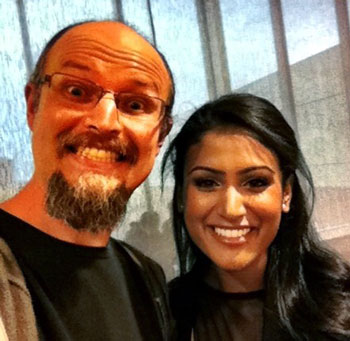I want to talk about Dylan Farrow’s open letter, published on the New York Times blog on February 1. But I don’t particularly want to talk about Woody Allen, or rape, or patriarchy, or the law [1].

David Erik Nelson
I want to talk about rhetoric.
I want to talk about rhetoric, and moral decision making, and a funny little blind spot built into our cognitive hardware.
At 942 words, Dylan Farrow’s open letter is one of the most brilliant pieces of persuasive writing I’ve seen in years. It’s strength stands on three legs.
First and foremost, Farrow’s letter opens and closes with a question, which is an established marketing tactic [2]: Humans naturally want to give assistance, and our minds rise unbidden to answer questions. We might be able to tamp down that inclination long enough to keep the answer from flying out our mouths or fingers, but we still rise to the question in our heads, and that’s all Farrow needs here. She needs us to engage her claim, which we might not be inclined to do if it was flatly stated.
Second is the powerful juxtaposition in the first two sentences:
1. “What’s your favorite Woody Allen movie?”
2. “Before you answer, you should know: when I was seven years old, Woody Allen took me by the hand and led me into a dim, closet-like attic on the second floor of our house.”
The juxtaposition implies an association, but does so without demanding we parse anything complicated. We are first asked a question – with which we reflexively engage. Then we’re given a very evocative declarative image.
Finally, that associative juxtaposition connects Woody Allen with violation, and activates a deep, pre-rational aversion buried in our hardware of our brains: We do not like to be associated with unclean things. Those two sentences associate Allen with this fundamentally repugnant violation in a way that speaks to our deep brain without engaging the rational surface layer.
If Farrow had flatly stated her claim – something like: “When I was seven years old Woody Allen raped me. You should not enjoy his films.” – our clever, lately evolved, logic-obsessed prefrontal cortices would balk, tossing up all sorts of rational roadblocks (It’s nonsense! The one thing has no bearing on the others! My favorite Woody Allen film was released three years before the events in question! ). The two sentences, as I’ve presented them, are literally non-sequitur; the one does not follow from the other in any obvious logical fashion.
Farrow’s rhetorical touch is brilliant, because she sidesteps our rationalizations, and directly engages our deep-seated imperative to distance ourselves and our loved ones from anything unclean. [3]
As such, Dylan Farrow’s question is much larger than one specific time and place, or one specific artist’s work: In everyday commerce, how do we decide how deeply we want to engage with people who we are fairly confident have done terrible things?
All of this is a bit outside the areas of my expertise [4], so I called Ari Kohen. [Full Story]






